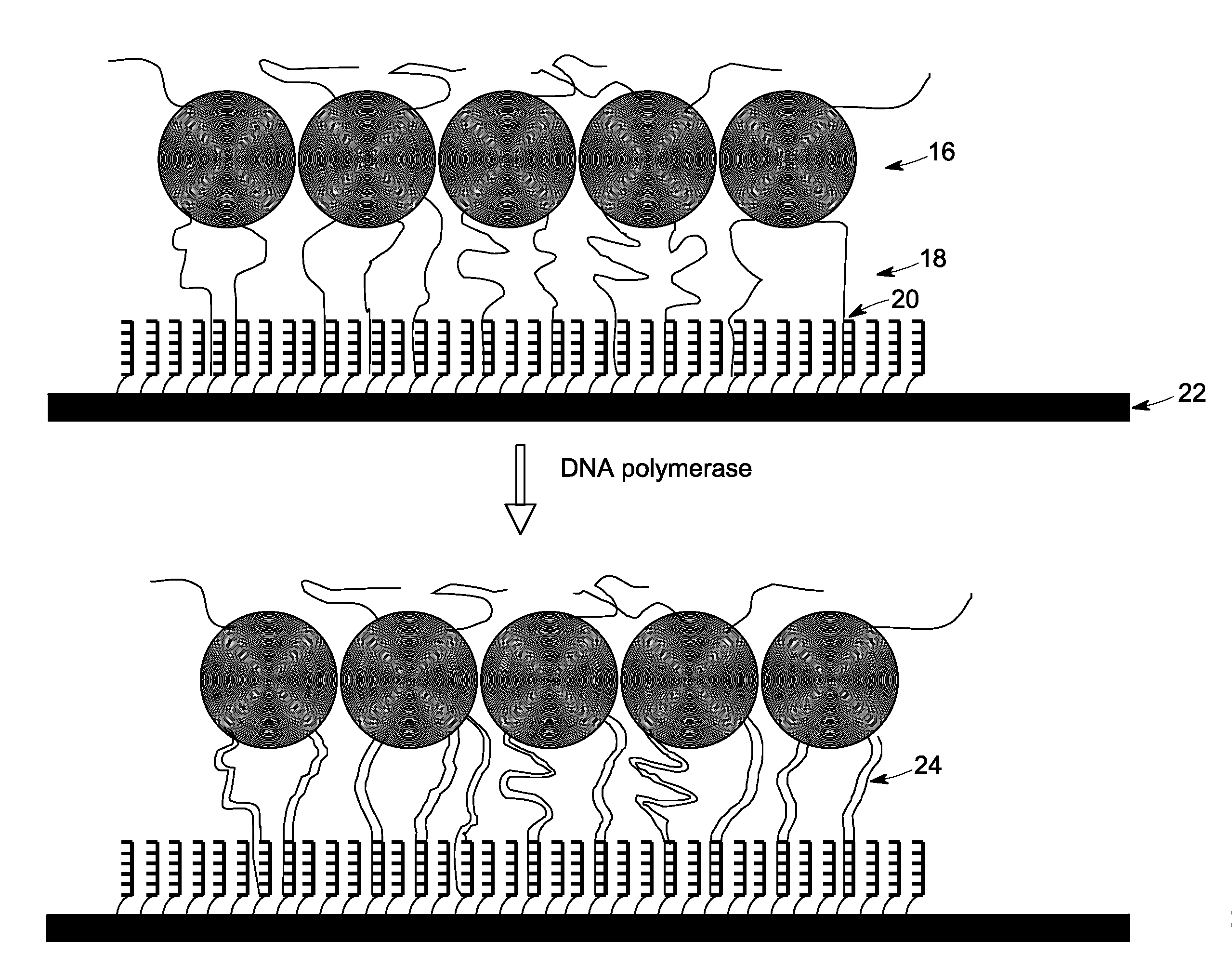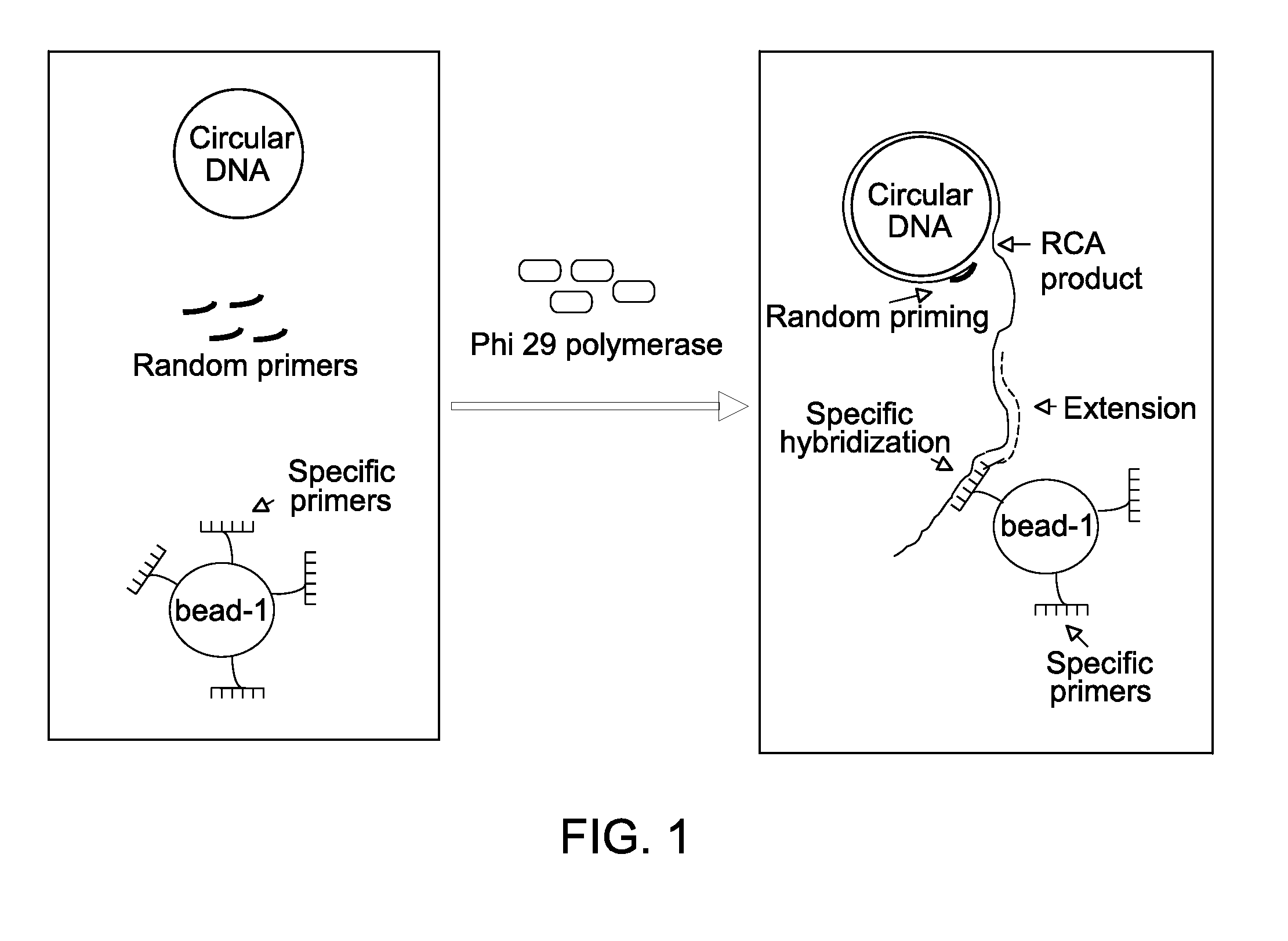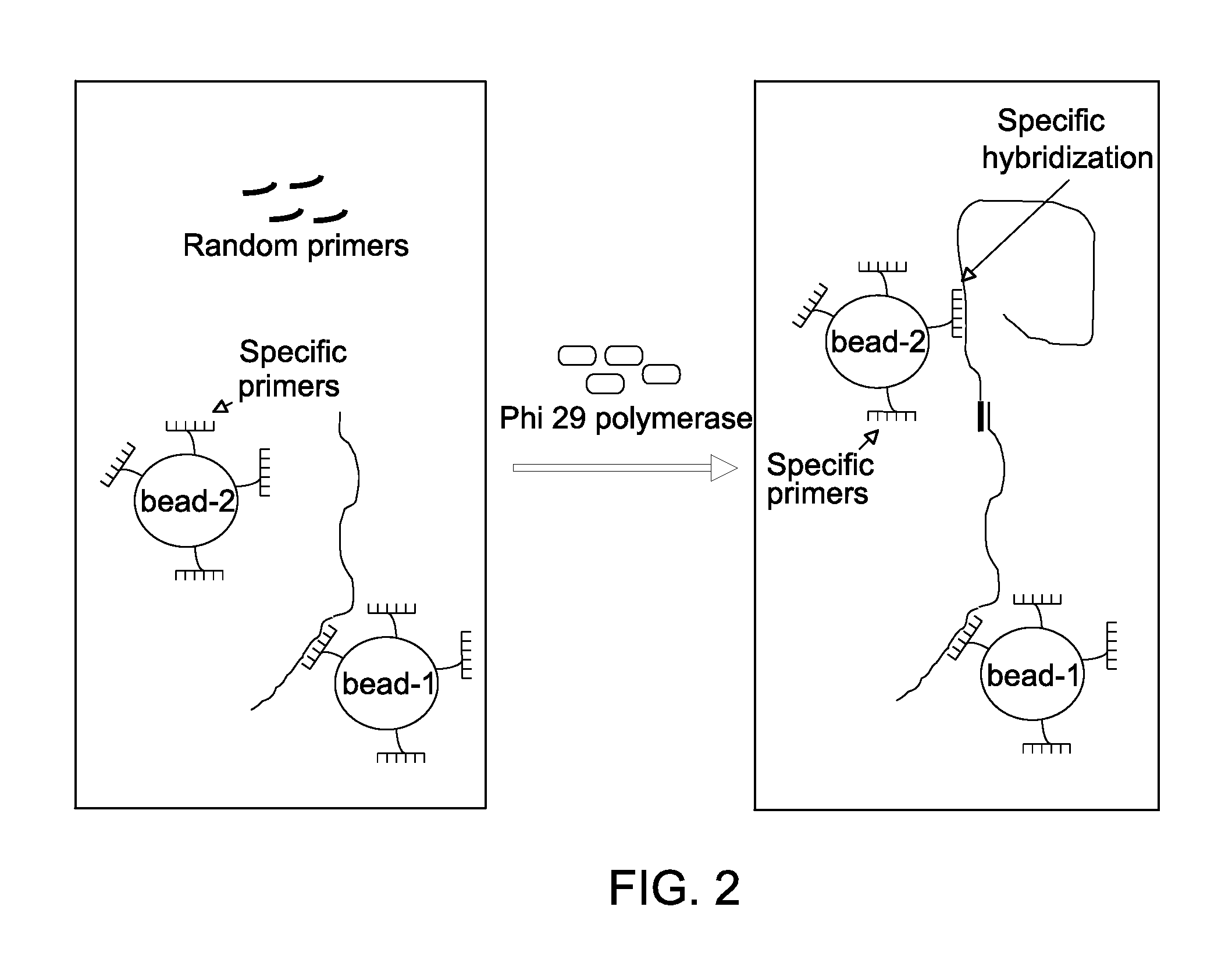Isothermal amplification of nucleic acid using primers comprising a randomized sequence and specific primers and uses thereof
a nucleic acid and primer technology, applied in the field of isothermal can solve the problems of low background signal of most of the currently available nucleic acid amplification techniques, and the loss of specific loci of interest during amplification, and achieve the effect of efficient amplification of nucleic acids
- Summary
- Abstract
- Description
- Claims
- Application Information
AI Technical Summary
Benefits of technology
Problems solved by technology
Method used
Image
Examples
example 1
Decontamination of Reaction Mixture Before Amplification
[0085]The reagents and reagent solutions that were used for nucleic acid amplification reaction were decontaminated in a nucleic acid-free hood prior to their use to remove any contaminating nucleic acids. The reagents such as Phi29 DNA polymerase, exonuclease I, exonuclease III, and SSB protein were stored in 50 mM Tris-HCl (pH 7.2), 200 mM NaCl, 10 mM DTT, 1 mM EDTA, 0.01% (v / v) Tween-20, and 50% (v / v) glycerol. The primer-nucleotide solution (primer-nucleotide mix) comprising primer and nucleotides (dNTPs) was decontaminated by incubating the primer-nucleotide mix with a combination of exonuclease I, exonuclease III, and a single stranded DNA binding protein (SSB protein). The enzyme mix comprising a DNA polymerase was decontaminated by incubating with an exonuclease in presence of a divalent cation (e.g., Mg2+). Any target nucleic acid amplification reaction was performed using the decontaminated enzyme mix and the primer-n...
example 2
No Template Control Amplification
[0088]Non-specific amplification reaction during a nucleic acid amplification reaction was estimated by performing a DNA amplification reaction without any added template DNA (No Template Control (NTC) amplification). The reactions employed either a completely random primer, or a partially constrained primer that comprises LNA nucleotides. Both these primers were exonuclease-resistant primers, having phosphorothioate linkages between the nucleotides toward the 3′ end of the sequence.
[0089]The amplification products from a DNA amplification reaction with no added target DNA template (NTC) arise from non-specific amplification reactions (false amplification or background amplification). The non-specific amplification may be due to amplification of contaminating DNA molecules, or background DNA molecules captured by beads by bead-bound specific primer. To avoid any non-specific amplification reaction originating from contaminating DNA, all the reagents ...
example 3
Amplification Reaction
[0091]For nucleic acid amplification reaction, the primer-nucleotide mix and the enzyme mix were mixed together after decontamination along with template nucleic acid to create an amplification reaction, which was then incubated at about 30° C. The isothermal amplification reaction was performed in presence of Phi 29 DNA polymerase in presence of random primer, bead-bound specific primer, and pUC18 plasmid DNA.
[0092]For estimating DNA amplification reactions, DNA amplification reactions were performed by incubating the de-contaminated primer-nucleotide mix and the de-contaminated enzyme mix at 30° C. for about 400 min with pUC18 plasmid DNA template. The amplification reaction mixture was composed of 40 μM primer (random primer, or partially constrained primer of sequence W+WNN*S in which W denotes either A or T / U, and S denotes either G or C, N represents a random nucleotide (i.e., N may be any of A, C, G, or T / U) a plus (+) sign preceding a letter designation...
PUM
| Property | Measurement | Unit |
|---|---|---|
| temperature | aaaaa | aaaaa |
| temperature | aaaaa | aaaaa |
| diameter | aaaaa | aaaaa |
Abstract
Description
Claims
Application Information
 Login to View More
Login to View More - R&D
- Intellectual Property
- Life Sciences
- Materials
- Tech Scout
- Unparalleled Data Quality
- Higher Quality Content
- 60% Fewer Hallucinations
Browse by: Latest US Patents, China's latest patents, Technical Efficacy Thesaurus, Application Domain, Technology Topic, Popular Technical Reports.
© 2025 PatSnap. All rights reserved.Legal|Privacy policy|Modern Slavery Act Transparency Statement|Sitemap|About US| Contact US: help@patsnap.com



